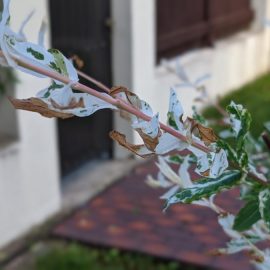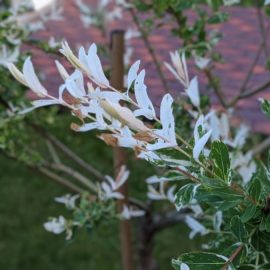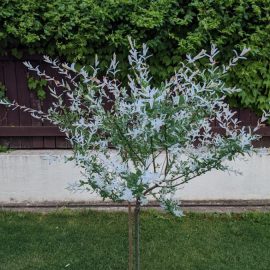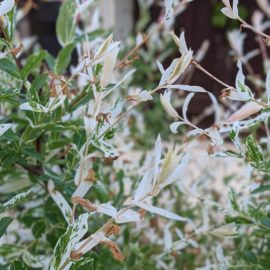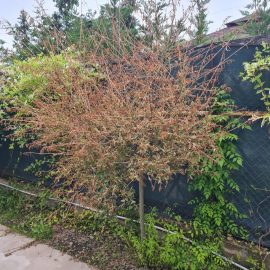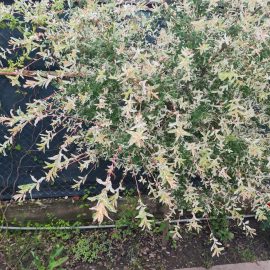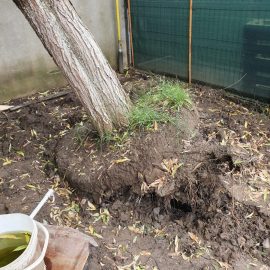Willow, planting guide and care work
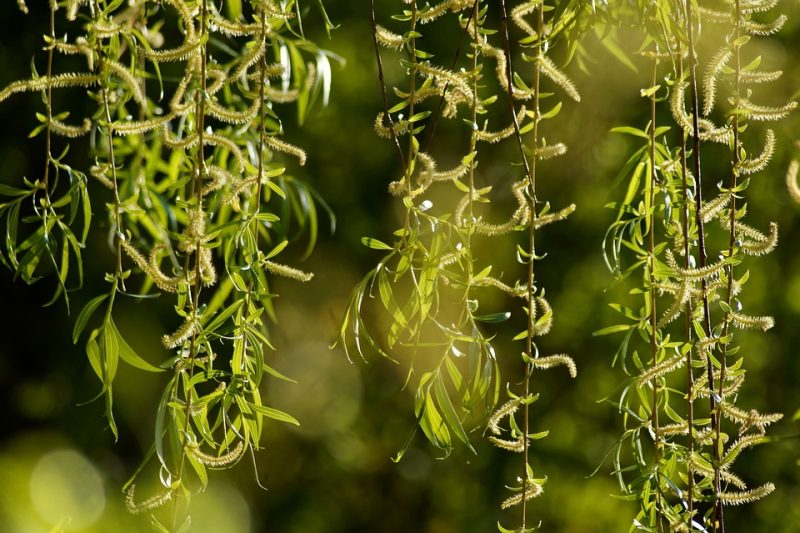
Willow is a plant that belongs to the genus Salix, it includes about 400 species of deciduous trees and shrubs, originating from the temperate and cold areas of the northern hemisphere. Their height differs depending on the species, from 6 cm (Salix herbacea), up to 30-40 m (Salix alba, Salix babylonica). It has a thin, flexible bark, filled with sap that contains a high percentage of salicylic acid. The roots are stoloniferous, resistant, they sprout from the aerial parts of the plants in conditions of high humidity, so the willows are very easy to propagate. In general, the leaves have an elongated shape and a serrated edge, they are simple, lanceolate, with a short petiole and two short, rounded stamens. The buds are arranged laterally and are generally protected by a hard membrane. The flowers are dioecious, appear and develop before foliation, have a fluffy appearance, and are commonly called “catkins”. Of the 400 species of willows, some have decorative value, others are used for medicinal purposes, in the manufacture of medicines. Some are also used in the energy industry, in the wood processing industry, etc.




Salix alba (white willow)
The species is native to Europe and Central and Western Asia, it has a rapid growth and can reach up to 30 m in height, with a trunk about 1 m in diameter. The name of the species comes from the whitish color of the leaves’ underside. It has an irregular crown, generally bent and the shoots are gray or green. The bark is gray-brown, strongly cracked, especially in mature specimens. The leaves are covered with fine, white hairs, which gives them a pale green color. Dioecious flowers have the characteristic shape of the genus.
Cultivars: “Caerulea”, with glossy leaves, without hairs, blue on the underside, “Vitellina”, used in osieries and “Splendens”, with silver leaves, found in mountainous and hilly areas.
Salix babylonica (weeping willow)
It is a species of willow native to Northern China, widespread for millennia in Western Asia and Europe. It has fast growth and can reach up to 25 m in height. It is special thanks to its branches with pendant growth. The shoots are yellow-brown, and the buds are small. The leaves and flowers have similar characteristics to the genus.
Cultivars: “Babylon”, with the branches bent, a feature characteristic to the species, and “Crispa”, with spiral leaves.
Salix matsudana (corkscrew willow)
This species is native to Northeastern China and has a short lifespan. It can grow up to 13 m in height and has the foliage and flowers characteristic of the genus.
Cultivars: “Tortuosa” is distinguished thanks to its branches that grow as spirals. For this reason, it is also grown as a bonsai or used in floral arrangements.
Salix caprea (goat willow)
It is a species of willow native to Europe and Central and Western Asia, with the shape of a shrub, which can reach a height of 10 m. It has leaves wider than other species, and dioecious flowers that develop in early spring, before foliation.
Cultivars: “Kilmarnock”, which has rigid and pendant tendrils.




Light. In general, all willow species prefer both sunny places with direct sunlight and partially shaded places. However, for optimal growth, they need at least 4 hours of direct sunlight a day.
Temperature. Most species of willow are successfully adapted to a temperate continental transitioning into an oceanic climate and are resistant to frost and drought, except for the weeping willow, which can be affected by late spring frosts.
Soil. In general, willows do not have high soil requirements. They grow easily in loamy-clayey, loamy-sandy, acidic, but also alkaline, well-drained, or compact soils. It prefers areas where the soil is permanently moist.
Fertilization. To stimulate the rich growth of trees and shrubs, during the vegetative growth period, it is recommended to apply specific fertilizers.
Recommended products
-
You can find products on a different store
Change Store -
You can find products on a different store
Change Store -
You can find products on a different store
Change Store -
You can find products on a different store
Change Store -
You can find products on a different store
Change Store -
You can find products on a different store
Change Store -
You can find products on a different store
Change Store -
You can find products on a different store
Change Store -
You can find products on a different store
Change Store -
You can find products on a different store
Change Store -
You can find products on a different store
Change Store -
You can find products on a different store
Change Store -
You can find products on a different store
Change Store -
You can find products on a different store
Change Store -
You can find products on a different store
Change Store -
You can find products on a different store
Change Store -
You can find products on a different store
Change Store -
You can find products on a different store
Change Store -
You can find products on a different store
Change Store -
You can find products on a different store
Change Store -
You can find products on a different store
Change Store -
You can find products on a different store
Change Store -
You can find products on a different store
Change Store -
You can find products on a different store
Change Store
Pruning. To maintain the desired shape, maintenance cuts should be performed annually, during the vegetative dormancy period. In general, willows have sensitive branches, which can easily break under the action of environmental factors or the weight of the crown. The cuts favor the development of rigid branches and a resistant structure.
Recommended products
-
You can find products on a different store
Change Store -
You can find products on a different store
Change Store -
You can find products on a different store
Change Store -
You can find products on a different store
Change Store -
You can find products on a different store
Change Store -
You can find products on a different store
Change Store -
You can find products on a different store
Change Store -
You can find products on a different store
Change Store -
You can find products on a different store
Change Store -
You can find products on a different store
Change Store -
You can find products on a different store
Change Store -
You can find products on a different store
Change Store -
You can find products on a different store
Change Store -
You can find products on a different store
Change Store -
You can find products on a different store
Change Store -
You can find products on a different store
Change Store -
You can find products on a different store
Change Store -
You can find products on a different store
Change Store -
You can find products on a different store
Change Store -
You can find products on a different store
Change Store -
You can find products on a different store
Change Store -
You can find products on a different store
Change Store -
You can find products on a different store
Change Store -
You can find products on a different store
Change Store
Planting
It can be done in spring or autumn, during the vegetative dormancy period, at temperatures above 5° C, if the soil is not frozen and there is no danger of frost. Be sure to purchase planting material from authorized nurseries. Immediately after planting, water abundantly, then keep the soil always moist.
Recommended products
-
You can find products on a different store
Change Store -
You can find products on a different store
Change Store -
You can find products on a different store
Change Store -
You can find products on a different store
Change Store -
You can find products on a different store
Change Store -
You can find products on a different store
Change Store -
You can find products on a different store
Change Store -
You can find products on a different store
Change Store -
You can find products on a different store
Change Store -
You can find products on a different store
Change Store -
You can find products on a different store
Change Store -
You can find products on a different store
Change Store -
You can find products on a different store
Change Store -
You can find products on a different store
Change Store -
You can find products on a different store
Change Store -
You can find products on a different store
Change Store -
You can find products on a different store
Change Store -
You can find products on a different store
Change Store -
You can find products on a different store
Change Store -
You can find products on a different store
Change Store -
You can find products on a different store
Change Store -
You can find products on a different store
Change Store -
You can find products on a different store
Change Store -
You can find products on a different store
Change Store
Propagation
Willows can be propagated through cuttings or grafting. Cuttings of semi-lignified branches, about 20 cm long, should be cut in early spring. They can be rooted in a bowl of water, which must be changed periodically to prevent the development of fungi. After the formation of roots, the cuttings should be planted in the ground, in holes 25 cm deep. Water regularly to prevent the soil from drying out. Salix alba and Salix caprea can be propagated through grafting on the rootstock of Salix viminalis (common osier).
Recommended products
-
You can find products on a different store
Change Store -
You can find products on a different store
Change Store -
You can find products on a different store
Change Store -
You can find products on a different store
Change Store -
You can find products on a different store
Change Store -
You can find products on a different store
Change Store -
You can find products on a different store
Change Store -
You can find products on a different store
Change Store -
You can find products on a different store
Change Store -
You can find products on a different store
Change Store -
You can find products on a different store
Change Store -
You can find products on a different store
Change Store -
You can find products on a different store
Change Store -
You can find products on a different store
Change Store -
You can find products on a different store
Change Store -
You can find products on a different store
Change Store -
You can find products on a different store
Change Store -
You can find products on a different store
Change Store -
You can find products on a different store
Change Store -
You can find products on a different store
Change Store -
You can find products on a different store
Change Store -
You can find products on a different store
Change Store -
You can find products on a different store
Change Store -
You can find products on a different store
Change Store
Diseases and pests
Willow species are susceptible to the attack of aphids and Chrysomela populi. Diseases that can occur in willow trees are rust (Puccinia spp.) and Nectria twig blight (Nectria coryli). Rust is manifested through the appearance of protruding yellow-orange dots, but the attack is not severe. Nectria twig blight causes ulcers on the bark of the tree, causing the death of the branch.
In addition:
- willows tolerate urban environments very well.
- compared to other ornamental trees, willows do not have a very long lifespan.
- high-growing species can develop strong roots, so they have to be planted at a distance from foundations, fences, etc.
- cuttings of Salix caprea root slower than other species.
- willows are trees that prevent soil erosion.














































































































































































































































































































































































































































